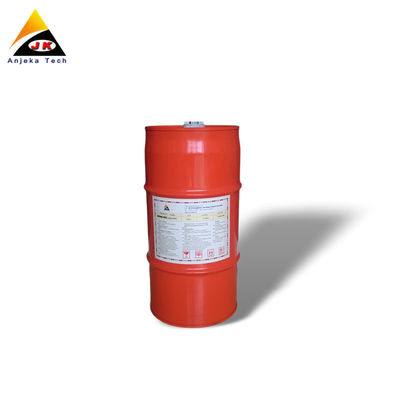GENERAL DESCRIPTION
Anjeka-6621 is a zero-release, highly branched structure wetting and dispersing additive for
solvent-free epoxy and other reactive systems.
PRODUCT DATA
Chemical Composition: Highly Dendritic Polyester
Typical Physical and Chemical Data:
The data given on this data sheet are typical values and are not product specifications.
Appearance: Brown liquid
Viscosity cps (25℃) 5000-20000
Acid value (mg KOH/g) 20-60
Amine value (mg KOH/g) 1-15
Density g/cm³(23℃) 1.00-1.20
Active ingredient (%) 100
STORAGE and TRANSPORT
It should be stored in a cool and dry place. Mix thoroughly before use, delamination or
turbidity may occur at temperatures below 0°C. Heat to 20°C and mix thoroughly.
Storage time is not recommended to exceed 12 months.
APPLICATION GUIDELINES
Industrial Coatings
Features and Benefits:
Anjeka-6621 has a highly branched chemical structure and is designed for use in solvent-free
epoxies as well as other reactive systems such as two-component polyurethanes and acid
catalyzed systems. During the milling process of the pigment and filler, the polyester side chain
of the additive is compressed while the adhesion of the amine groups to the surface of the
pigment or filler is increased. The pigment affinity groups are adsorbed on the surface of the
pigmented filler, while the polyester side chains remain wrapped around the amine groups,
preventing them from reacting with the epoxy resin. The additive significantly reduces
viscosity and does not react with the resin, resulting in long term storage stability.
Anjeka-6621 wets and deflocculates pigments well. The additive is widely compatible and has
no negative effect on coating properties such as yellowing resistance, metal adhesion or
corrosion protection.
APPLICATION FIELDS/APPLICATION SECTORS
Industrial coatings●
Wood and furniture coatings●
Anti-corrosion coatings●
Automotive coatings ○
●--Special Recommendations; ○--Recommendations
RECOMMENDED LEVELS
The following additions are based on the ratio of dispersant solids to pigment volume:
Inorganic pigments: 5%-10%
Titanium dioxide: 1%-3
Organic pigments: 20%-45
Carbon black: 20%-80
The above data are empirical, the optimal amount should be determined through a series of
tests.
INCORPORATION AND PROCESSING INSTRUCTIONS
In order to obtain the best effect, the additives should be added to the abrasive before adding
the pigment, so as to fully utilize the effect of the additives. Pre-mix the resin and solvent
components of the abrasive, then slowly add the additives with constant stirring. After the
additives are fully dispersed, then add the pigments.
PACKAGING
-25kg iron drum with inner coating
-180kg ring plastic drum

Our company:


We are building a new large-scale production base
strategically located in Hubei Province,with annual production capacity of 6000 tonnes of Interface additives project settled in Songzi chemical park in November 2022.
Benefits to our customers and collaboration partners:
• stable large-scale production, better quality control
• lower production unit cost
Collaboration Opportunities:
• contract manufacturing and OEM/ODM collaboration opportunities
Our Certifcate&Patents






 Your message must be between 20-3,000 characters!
Your message must be between 20-3,000 characters! Please check your E-mail!
Please check your E-mail!  Your message must be between 20-3,000 characters!
Your message must be between 20-3,000 characters! Please check your E-mail!
Please check your E-mail! 











